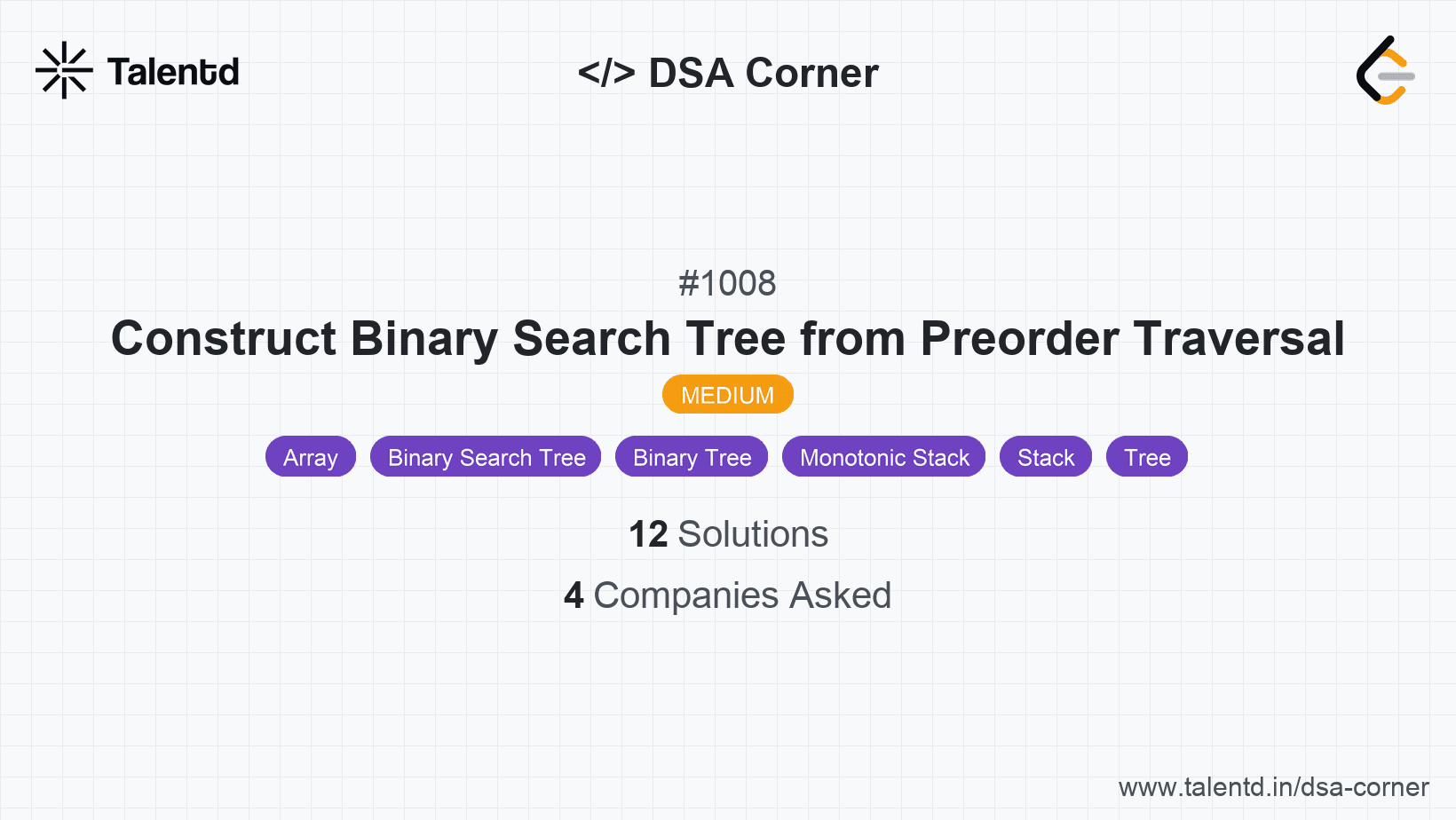
Sponsored
Sponsored
In this approach, you will construct the binary search tree (BST) by recursively inserting nodes. The property of the BST is used where, for each node, nodes in the left subtree are less, and nodes in the right subtree are greater.
Start with the first element from the preorder sequence, which will be the root. Recursively insert subsequent elements using the BST insertion logic, and this will ensure that the tree constructed respects both the structure of a BST and adheres to the given preorder traversal.
Time Complexity: O(n^2) in the worst case due to skewed trees where each insertion is O(n).
Space Complexity: O(n) due to the recursion stack and additional space for the BST nodes.
1class TreeNode {
2 int val;
3 TreeNode left;
4 TreeNode right;
5 TreeNode(int x) { val = x;
This Java solution leverages the object-oriented nature of the language to maintain each tree node initialized through the constructor. It follows the same logic as the C++ implementation for recursively inserting each value from the preorder array into the BST.
This approach uses a stack to iteratively construct the BST from the preorder traversal, which helps in achieving better average performance. Begin with the root node from the first preorder element, and iterate over the rest of the array with a technique to adjust parents as potential ancestors using a stack. Primary benefit is an average O(n log n) time complexity due to more constant-time parent-backtracking via stack use.
Time Complexity: O(n), processing each node in a single pass with constant-time stack operations.
Space Complexity: O(n) due to the usage of an explicit stack for nodes.
This Python solution constructs the BST iteratively by keeping a stack that assists in navigating ancestor nodes when child placement occurs. The slide down and assignment logic are handled within the loop.